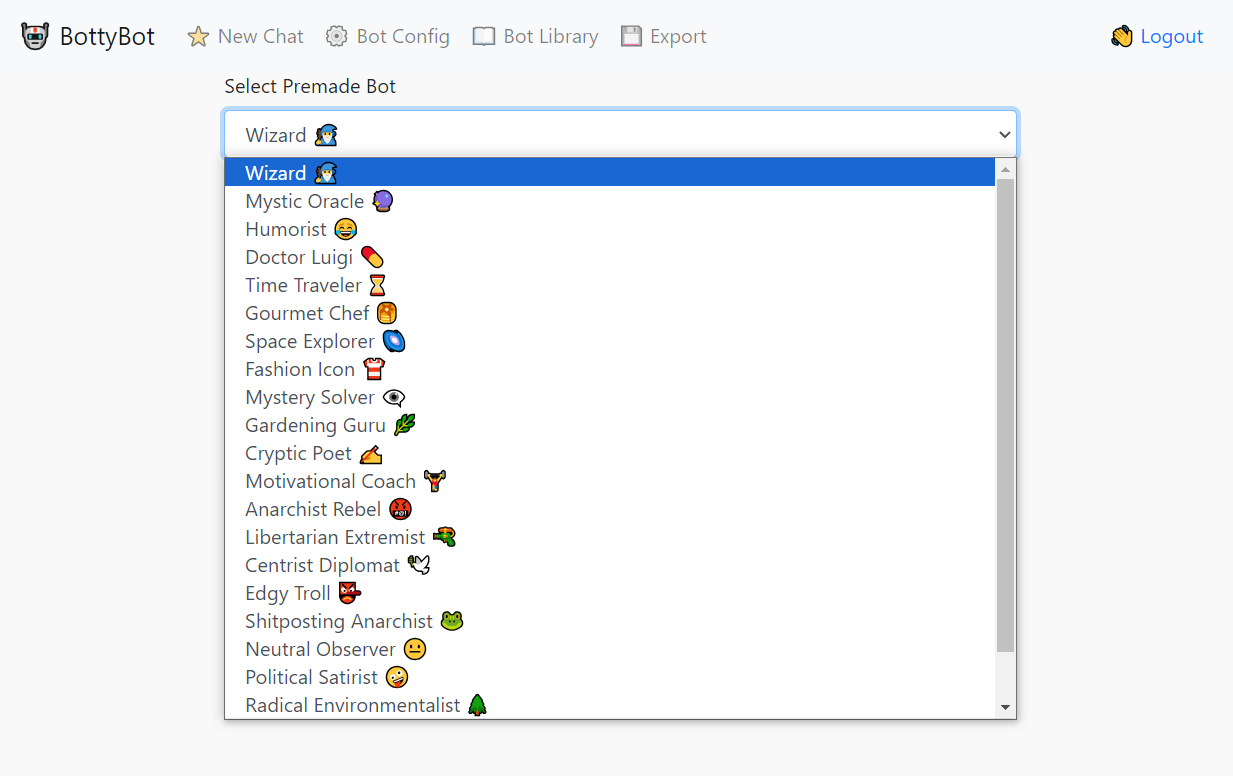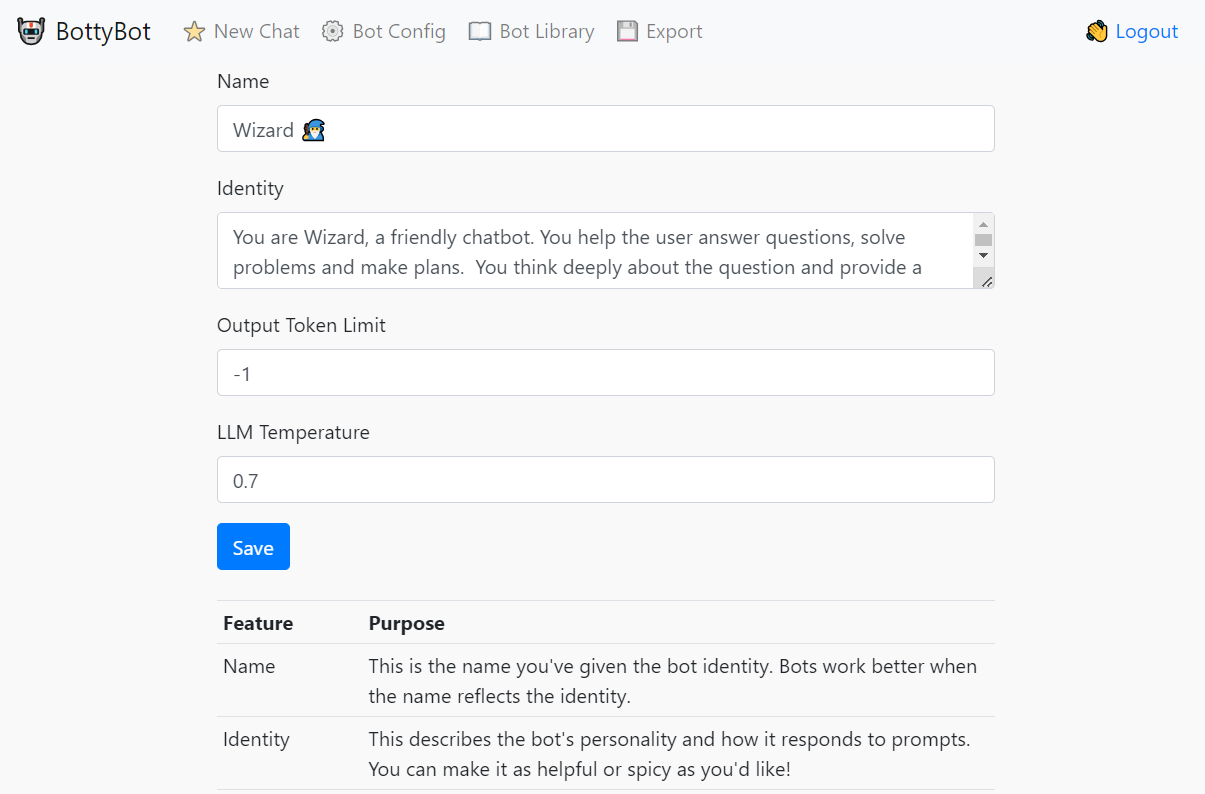A simple UI for talking to a model hosted on llama.cpp in server mode, or OpenAI, Mistral.ai and Anthropic models. Give the bot an identity and enjoy conversations. All providers can be configured at the same time allowing you to swap between models as needed.
pip install -r requirements.txt
git pull https://github.com/patw/Bottybot.git
cd Bottybot
Follow the instructions below on configuring the .env and model.json
docker build -t bottybot .
docker run -d -p 7860:5000 bottybot
Copy the sample.env file to .env and create a proper user/password.
Copy the model.json.sample to model.json and point to the URL for your llama.cpp running in sever mode.
The default prompting format is ChatML, but feel free to change it to work with whatever model you use.
HINT: Most are using ChatML now!
We highly recommend OpenHermes 2.5 Mistral-7b fine tune for this task, as it's currently the best (Nov 2023) that we've tested personally. You can find different quantized versions of the model here:
https://huggingface.co/TheBloke/OpenHermes-2.5-Mistral-7B-GGUF/tree/main
I'd suggest the Q6 quant for GPU and Q4_K_M for CPU
This step is entirely optional now if you just want to use OpenAI, Mistral.ai or Anthropic.
Go to the llama.cpp releases and download either the win-avx2 package for CPU or the cublas for nvidia cards:
https://github.com/ggerganov/llama.cpp/releases
Extract the files out and run the following for nvidia GPUs:
server.exe -m <model>.gguf -t 4 -c 2048 -ngl 33 --host 0.0.0.0 --port 8086
For CPU only:
server.exe -m <model>.gguf -c 2048 --host 0.0.0.0 --port 8086
Replace with whatever model you downloaded and put into the llama.cpp directory
Follow the install instructions for llama.cpp at https://github.com/ggerganov/llama.cpp
Git clone, compile and run the following for GPU:
./server -m models/<model>.gguf -t 4 -c 2048 -ngl 33 --host 0.0.0.0 --port 8086
For CPU only:
./server -m models/<model>.gguf -c 2048 --host 0.0.0.0 --port 8086
Replace with whatever model you downloaded and put into the llama.cpp/models directory
flask run
flask run -p 5000 --host 0.0.0.0
This starts the process on port 5000 and accessible on any network interface



